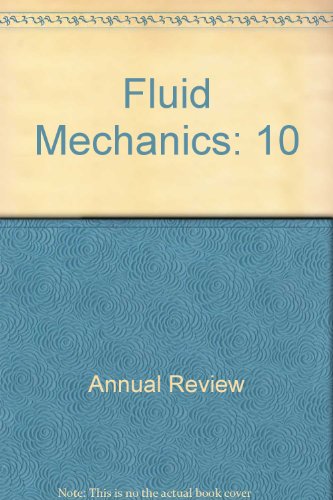Submesoscale Dynamics in the Upper Ocean
IF 30.2
1区 工程技术
Q1 MECHANICS
引用次数: 11
Abstract
Oceanic motions with spatial scales of 200 m–20 km, called submesoscales, are ubiquitous in the upper ocean and serve as a key intermediary between larger-scale balanced dynamics and unbalanced turbulence. Here, we introduce the fluid dynamics of submesoscales and contrast them with motions at larger and smaller scales. We summarize the various ways in which submesoscales develop due to instabilities that extract potential or kinetic energy from larger-scale balanced currents; some instabilities have counterparts at larger scales, while others are distinct to the submesoscale regime. Submesoscales modify the density stratification in the upper ocean and redistribute energy between scales. These energy transfers are complex, having both up-scale and down-scale components. Submesoscale eddies and fronts also contribute to a spatially heterogeneous distribution of shear and restratification that leave an imprint on upper ocean turbulence. The impact of submesoscales on the Earth's climate remains an exciting frontier. Expected final online publication date for the Annual Review of Fluid Mechanics, Volume 55 is January 2023. Please see http://www.annualreviews.org/page/journal/pubdates for revised estimates.上层海洋的亚中尺度动力学
200 - 20 km空间尺度的海洋运动,称为亚中尺度,在海洋上层普遍存在,是大尺度平衡动力学和不平衡湍流之间的关键中介。在这里,我们介绍了亚中尺度的流体动力学,并将其与大尺度和小尺度的运动进行了对比。我们总结了亚中尺度由于不稳定性而发展的各种方式,这些不稳定性从更大尺度的平衡流中提取势能或动能;有些不稳定性在更大尺度上有对应的不稳定性,而另一些则与亚中尺度截然不同。亚中尺度改变了上层海洋的密度分层,并在尺度之间重新分配能量。这些能量转移是复杂的,既有大规模的成分,也有小规模的成分。亚中尺度涡旋和锋面也有助于切变和再冰冻在空间上的不均匀分布,从而在上层海洋湍流中留下印记。亚中尺度对地球气候的影响仍然是一个令人兴奋的前沿。预计流体力学年度评论第55卷的最终在线出版日期为2023年1月。修订后的估计数请参阅http://www.annualreviews.org/page/journal/pubdates。
本文章由计算机程序翻译,如有差异,请以英文原文为准。
求助全文
约1分钟内获得全文
求助全文
来源期刊
CiteScore
54.00
自引率
0.40%
发文量
43
期刊介绍:
The Annual Review of Fluid Mechanics is a longstanding publication dating back to 1969 that explores noteworthy advancements in the field of fluid mechanics. Its comprehensive coverage includes various topics such as the historical and foundational aspects of fluid mechanics, non-newtonian fluids and rheology, both incompressible and compressible fluids, plasma flow, flow stability, multi-phase flows, heat and species transport, fluid flow control, combustion, turbulence, shock waves, and explosions.
Recently, an important development has occurred for this journal. It has transitioned from a gated access model to an open access platform through Annual Reviews' innovative Subscribe to Open program. Consequently, all articles published in the current volume are now freely accessible to the public under a Creative Commons Attribution (CC BY) license.
This new approach not only ensures broader dissemination of research in fluid mechanics but also fosters a more inclusive and collaborative scientific community.

 求助内容:
求助内容: 应助结果提醒方式:
应助结果提醒方式:


